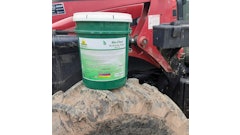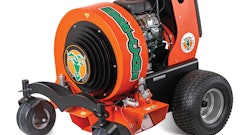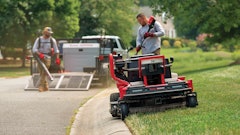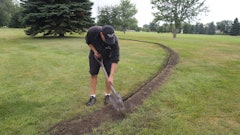
After reviewing over 2,700 contest submissions, the Outdoor Power Equipment Institute’s (OPEI) Research and Education Foundation and Scholastic announced the winners of TurfMutt’s national “The (Really) Great Outdoors” contest.
Lauren Wu, a sixth grade student at Robert Healy School in Chicago, Ill. won the $2,500 grand prize for her essay and illustration about creating a community green space for her urban neighborhood.
Designed to be inclusive so it serves everyone in the neighborhood, her outdoor space features an oak tree, a tree house stocked with books for reading, swings, zip lines, seating areas, flowers, shrubs and grass. “People, plants, and animals live together in harmony here,” WU wrote in her entry. Wu’s teacher, Nicole Hauser, and the school will each receive a $750 cash prize.
“This is the first year we’ve expanded our annual contest to middle schoolers, who came up with some beautiful and, more importantly, functional and purposeful designs for green spaces,” said Kris Kiser, President and CEO of OPEI. “A cornerstone of TurfMutt’s teaching is getting kids to understand that our lawns and greenspaces are urban habitats.”
He pointed out that such spaces are critical to wildlife, pollinators and the health and well-being of communities.
“Family yards, school yards and parks are part of a vast ecosystem that supports all of us,” Kiser said. “We mean it when we say nature starts at your back door. Introducing kids to the outdoors is good for them and good for all of us.”
Hope Wheatley, an eighth-grader at Franklin Township Middle School East in Indianapolis, Ind., won first place and a $2,000 cash prize for her entry.
Wheatley created a comic strip that featured characters working together to design a community garden. Her teacher, Kelly Barnes, and the school will each receive a $500 cash prize.
An illustrated essay by eighth-grader Angelica Undan of Kapolei Middle School in Kapolei, Hawaii, won second place. Her outdoor space included areas for people to meditate and relax their mind and spirit. She will receive a $1,500 cash prize, and her teacher, Daryle Mishina, will receive a $250 cash prize.
“This year’s contest entries were so exceptional that we decided to award two third prizes,” says Kiser.
Each third-place winner will receive a cash prize of $750.
A detailed makeover plan for a school courtyard took one of the third-place prizes, and was designed by Sean Mayfair-Drennen, an eighth-grader at Braden River Middle School in Bradenton, Fla. In an essay, he described his design for a courtyard with bright flowers and foliage. He wrote, “It would bring a new element to the school’s environment, bringing more than just color but life to the courtyard.” His teacher, Nora Hyde, and the school will each receive a cash prize of $125.
The other third-place winner was Luke Benkart, an eighth grader at Holy Sepulcher School in Butler, Pa., who wrote an essay describing a naturescape with trails, waterfalls and playgrounds. His entry included a drawing of his space as well. He wrote: “Nature is one of the most beautiful things we have to enjoy in our world.”
Mayfair-Drennen’s teacher Nora Hyde and Benkart’s teacher and each of their schools will each receive cash prizes of $125.
The annual contest is part of the TurfMutt environmental stewardship and education program, which teaches students in grades K–8 to care for our living landscapes and appreciate their benefits. The program is marking its tenth anniversary in 2019.
Contest entrants in grades six to eight were asked to design, by writing about and/or drawing, a nature space that works for their lifestyle and community no matter where they live—city, country, suburb, house, or apartment. The contest was sponsored by Scholastic, the global children’s publishing, education and media company.
To enter the contest, students drew upon their environmental science knowledge, planning and problem-solving skills, as well as their creativity to depict how their idea would benefit both the environment and their community, while also motivating the student (and others) to get outside and enjoy nature.
The program’s educational materials, available at www.TurfMutt.com, are free and support Science, Technology, Engineering and Math (STEM) standards for grades K–8. The TurfMutt environmental education program, funded and managed by OPEI’s Research and Education Foundation, has reached 68 million students, teachers, and families since 2009.















![Doosan Bobcat Wacker Neuson Stack 2ec Js Pb V6e[1]](https://img.greenindustrypros.com/mindful/acbm/workspaces/default/uploads/2025/12/doosan-bobcat-wacker-neuson-stack2ecjspbv6e1.CPyyz8ubHn.png?ar=16%3A9&auto=format%2Ccompress&bg=fff&fill-color=fff&fit=fill&h=135&q=70&w=240)



